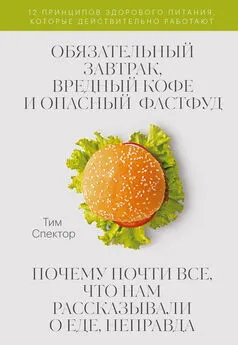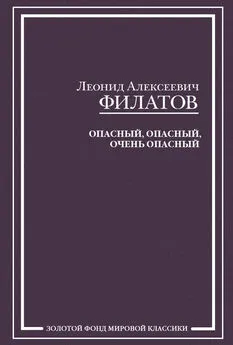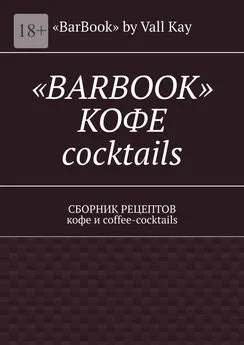Тим Спектор - Обязательный завтрак, вредный кофе и опасный фастфуд
- Название:Обязательный завтрак, вредный кофе и опасный фастфуд
- Автор:
- Жанр:
- Издательство:Манн, Иванов и Фербер
- Год:2021
- Город:Москва
- ISBN:9785001697381
- Рейтинг:
- Избранное:Добавить в избранное
-
Отзывы:
-
Ваша оценка:
Тим Спектор - Обязательный завтрак, вредный кофе и опасный фастфуд краткое содержание
Тим Спектор провел беспрецедентное исследование, в результате которого понял, насколько необоснованны большинство глубоко укорененных в нашем сознании представлений о еде. В каждой главе своей книги он объясняет, почему почти всё, что нам рассказывали о еде, неправда.
Прочитав его книгу, вы сможете полностью переосмыслить свое отношение к еде и научитесь формировать собственный индивидуальный рацион на основе научных рекомендаций.
Обязательный завтрак, вредный кофе и опасный фастфуд - читать онлайн бесплатно ознакомительный отрывок
Интервал:
Закладка:
335
Welch K. A. Alcohol consumption and brain health // BMJ. 2017. Vol. 357. P. j2645.
336
Sabia S. Alcohol consumption and risk of dementia: 23 year follow-up of Whitehall II cohort study // BMJ. 2018. Vol. 362. P. k2927.
337
Holt-Lunstad J. Social relationships and mortality risk: a meta-analytic review // PLOS Medicine. 2010. Vol. 7. No. 7. P. e1000316.
338
Wood A. M. Risk thresholds for alcohol consumption: combined analysis of individual-participant data for 599,912 current drinkers in 83 prospective studies // The Lancet. 2018. Vol. 391. No. 10129. Pp. 1513–1523.
339
Griswold M. G. Alcohol use and burden for 195 countries and territories, 1990–2016: a systematic analysis for the Global Burden of Disease Study 2016 // The Lancet. 2018. Vol. 392. No. 10152. Pp. 1015–1035.
340
Freeman A. L. Communicating health risks in science publications: time for everyone to take responsibility // BMC Medicine. 2018. Vol. 16. No. 1. P. 207.
341
Edenberg H. J. The genetics of alcohol metabolism: role of alcohol dehydrogenase and aldehyde dehydrogenase variants // Alcohol Research and Health. 2007. Vol. 30. No. 1. Pp. 5–13.
342
Ruiz S. M. Closing the gender gap: the case for gender-specific alcoholism research // Journal of Alcoholism and Drug Dependence. 2013. Vol. 1. No. 6. P. e106.
343
Vatsalya V. A review on the sex differences in organ and system pathology with alcohol drinking // Current Drug Abuse Reviews. 2017. Vol. 9. No. 2. Pp. 87–92.
344
Lloyd P. Deadly link between alcohol and breast cancer is “ignored by middleaged women who are most at risk of developing the disease” // Mail Online. 13 February 2019.
345
Queipo-Ortuño M. I. Influence of red wine polyphenols and ethanol on the gut microbiota ecology and biomarkers // Am. Journal of Clinical Nutrition. 2012. Vol. 95. No. 6. Pp. 1323–1334.
346
Chaplin A. Resveratrol, metabolic syndrome, and gut microbiota // Nutrients. 2018. Vol. 10. No. 11. P. e1651; Fan X. Drinking alcohol is associated with variation in the human oral microbiome in a large study of American adults // Microbiome. 2018. Vol. 6. No. 1. P. 59.
347
LeRoy C. I. Red wine consumption associated with increased gut microbiota α-diversity in 3 independent cohorts // Gastroenterology. 2019. Vol. pii: S0016–5085. No. 19. Pp. 41244–4.
348
de Visser R. O. The growth of “Dry January”: promoting participation and the benefits of participation // Eur. J. Public Health. 2017. Vol. 27. No. 5. Pp. 929–931.
349
Naimi T. S. Erosion of state alcohol excise taxes in the United States // Journal of Studies on Alcohol and Drugs. 2018. Vol. 79. No. 1. Pp. 43–48.
350
cdc.gov/alcohol/index.htm(2019).
351
Zupan Z. Erosion of state alcohol excise taxes in the United States // BMJ. 2017. Vol. 359. P. j5623.
352
Coley D. Local food, food miles and carbon emissions: a comparison of farm shop and mass distribution approaches // Food Policy. 2009. Vol. 34. No. 2. Pp. 150–155.
353
Saunders C. Food miles, carbon footprinting and their potential impact on trade // Semantic Scholar. 2009; AARES 53rd annual conference at Cairns, 10–13 February 2009.
354
Soode-Schimonsky E. Product environmental footprint of strawberries: case studies in Estonia and Germany // J. Environ. Management. 2017. Vol. 203. Pt. 1. Pp. 564–577.
355
Willett W. Food in the Anthropocene: the EAT-Lancet Commission on healthy diets from sustainable food systems // The Lancet. 2019. Vol. 393. No. 10170. Pp. 447–492.
356
Milner J. Health effects of adopting low greenhouse gas emission diets in the UK // BMJ Open. 2015. Vol. 5. P. e007364.
357
Poore J. Reducing food’s environmental impacts through producers and consumers // Science. 2018. Vol. 360. Pp. 987–992.
358
Searchinger T. D. Assessing the efficiency of changes in land use for mitigating climate change // Nature. 2018. Vol. 564. Pp. 249–253.
359
Monbiot G. We can’t keep eating as we are — why isn’t the IPCC shouting this from the rooftops? // The Guardian. 9 August 2019.
360
Mesnage R. Facts and fallacies in the debate on glyphosate toxicity // Frontiers in Public Health. 2017. Vol. 5. P. 316.
361
iarc.fr/wp-content/uploads/2018/07/MonographVolume112–1.pdf(20 March 2015).
362
Webster B. Weedkiller scientist was paid £120,000 by cancer lawyers // The Times. 18 October 2017.
363
Mills P. J. Excretion of the herbicide glyphosate in older adults between 1993 and 2016 // JAMA. 2017. Vol. 318. No. 16. Pp. 1610–1611.
364
Tarazona J. V. Glyphosate toxicity and carcinogenicity: a review of the scientific basis of the European Union assessment and its differences with IARC // Archives of Toxicology. 2017. Vol. 91. No. 8. Pp. 2723–2743; Portier C. J. Update to Tarazona et al. (2017): glyphosate toxicity and carcinogenicity: a review of the scientific basis of the European Union assessment and its differences with IARC // Archives of Toxicology. 2018. Vol. 92. No. 3. P. 1341.
365
Chang E. T. Systematic review and meta-analysis of glyphosate exposure and risk of lymphohematopoietic cancers // Journal of Environmental Science and Health, Part B. 2016. Vol. 51. No. 6. Pp. 402–434.
366
Gillezeau C. The evidence of human exposure to glyphosate: a review // Environmental Health. 2019. Vol. 18. No. 1. P. 2; Leon M. E. Pesticide use and risk of non-Hodgkin lymphoid malignancies in agricultural cohorts from France, Norway and the USA: a pooled analysis from the AGRICOH consortium // International Journal of Epidemiology. 2019. Vol. 48. No. 5. Pp. 1519–1535.
367
Hu L. The association between non-Hodgkin lymphoma and organophosphate pesticides exposure: a meta-analysis // Environmental Pollution. 2017. Vol. 231. Pp. 319–328.
368
González-Alzaga B. A systematic review of neurodevelopmental effects of prenatal and postnatal organophosphate pesticide exposure // Toxicology Letters. 2014. Vol. 230. No. 2. Pp. 104–121; Chiu Y. Association between pesticide residue intake from consumption of fruits and vegetables and pregnancy outcomes among women undergoing infertility treatment with assisted reproductive technology // JAMA. 2018. Vol. 178. No. 1. Pp. 17–26.
369
Manservisi F. The Ramazzini Institute 13-week pilot study glyphosate-based herbicides administered at human-equivalent dose to Sprague Dawley rats // Environmental Health. 2019. Vol. 18. No. 1. P. 15; Aitbali Y. Glyphosate-based herbicide exposure affects gut microbiota, anxiety and depression-like behaviors in mice // Neurotoxicology and Teratology. 2018. Vol. 67. Pp. 44–49.
370
Motta E. V. Glyphosate perturbs the gut microbiota of honey bees // PNAS. 2018. Vol. 115. No. 41. Pp. 10305–10310.
371
Baudry J. Association of frequency of organic food consumption with cancer risk: findings from NutriNet-Santé Prospective Cohort Study // JAMA. 2018. Vol. 178. No. 12. Pp. 1597–1606.
372
Bradbury K. E. Organic food consumption and the incidence of cancer in a large prospective study of women in the UK // British Journal of Cancer. 2014. Vol. 110. Pp. 2321–2326.
373
anh-usa.org/wp-content/uploads/2016/04/ANHUSA-glyphosate-breakfast-study-FINAL.pdf(19 April 2016)
374
Womersley K. Medical schools should be prioritising nutrition and lifestyle education // BMJ. 2017. Vol. 359. P. j4861.
375
Crowley J. Nutrition in medical education: a systematic review // Lancet Planetary Health. 2019. Vol. 9. P. PE379–E389.
376
Greenhalgh S. Making China safe for Coke: how Coca-Cola shaped obesity science and policy in China // BMJ. 2019. Vol. 364. P. k5050.
377
Lean M. E. Primary care-led weight management for remission of type 2 diabetes (DiRECT): an open-label, cluster-randomised trial // The Lancet. 2018. Vol. 391. No. 10120. Pp. 541–551.
378
ncbi.nlm.nih.gov/pubmed/21366836; Zhu D. The relationship between health professionals’ weight status and attitudes towards weight management: a systematic review // Obesity Reviews. 2011. Vol. 12. No. 5. Pp. e324–337.
379
nutritank.com; thedoctorskitchen.com.
380
Aspry K. E. Medical nutrition education, training and competencies to advance guideline-based diet counseling by physicians // Circulation. 2018. Vol. 137. Pp. e821–e841.
381
McDonald D. American gut: an open platform for citizen science microbiome research // mSystems. 2018. Vol. 3. No. 3. Pp. e00031–18.
382
joinzoe.com.
383
Blaser M. J. Antibiotic use and its consequences for the normal microbiome // Science. 2016. Vol. 352. Pp. 544–545.
384
de Cabo R. Effects of intermittent fasting on health, aging and disease // New England Journal of Medicine. 2019. Vol. 381. Pp. 2541–2551.
385
US Burden of Disease Collaborators. The state of US health, 1990–2010: burden of diseases, injuries, and risk factors // JAMA. 2013. Vol. 310. No. 6. Pp. 591–606.
386
Reiley L. How the Trump administration limited the scope of the USDA’s 2020 dietary guidelines // Washington Post. 30 August 2019.
387
Sterk R. EU Sugar producers suffer after reform // Food Business News. 8 August 2019.
388
Moses H. The anatomy of medical research: US and international comparisons // JAMA. 2015. Vol. 313. No. 2. Pp. 174–189.
389
Kyle R. G. Obesity prevalence among healthcare professionals in England: a cross sectional study using the Health Survey for England // BMJ Open. 2017. 4 Dec. P. 018498; Luckhaupt S. E. Prevalence of obesity among US workers and associations with occupational factors // Am. J. Prev. Med. 2014. Vol. 46. No. 3. Pp. 237–248.
Интервал:
Закладка:










